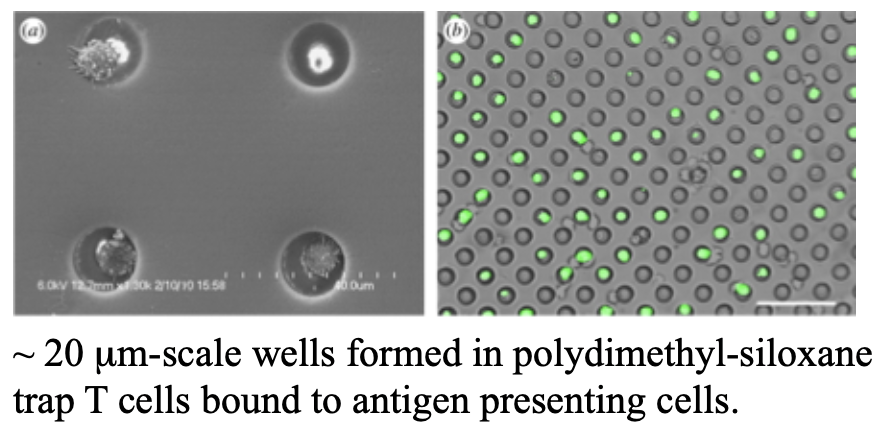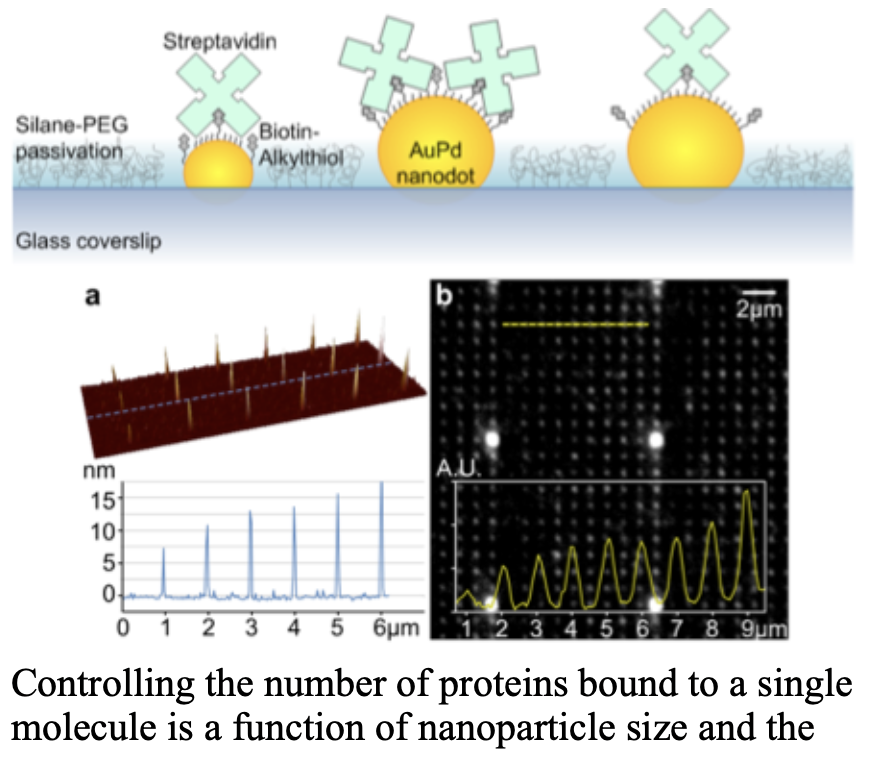
Nanoscale biophysics
As transistors have been continually scaled to smaller dimensions over the past several decades, they have entered a realm where their components have reached the size of biomolecules. This creates an opportunity to exploit the tools of semiconductor device fabrication to create nanoscale biomimetic platforms that simulate specific aspects of biological systems in order to probe, in a well-controlled fashion, cellular functions and specific biomolecular interactions. Critical to this effort is the combination of lithographic patterning, materials processing and precisely-designed selective surface chemistry.
- Platforms for probing cellular mechanoresponse – A variety of platforms can be developed for exposing cells to different physical factors that simulate a specific cellular environment. These can range from chemical patterns, to micro- and nanoscale patterns of rigidity. In addition, Micro-scale wells can be fabricated to capture individual cells and/or cell pairs for monitoring of cell-cell interactions. Further, arrays of ligands of specific cell surface receptors can be organized in virtually any geometric arrangement to probe effects such as receptor clustering, stimulation and inhibition and others.

- Single-molecule platforms – Arbitrary patterns of single-biomolecules (e.g., proteins, DNA, etc.) can be arrayed on a surface to probe individual interactions or cellular response to the geometric configuration of surface receptors. DNA/DNA, DNA/protein or protein/protein interactions, for example, may be observed in real time, on a massively parallel scale. The number of biomolecules bound to patterned nanoparticle arrays can be precisely controlled.

